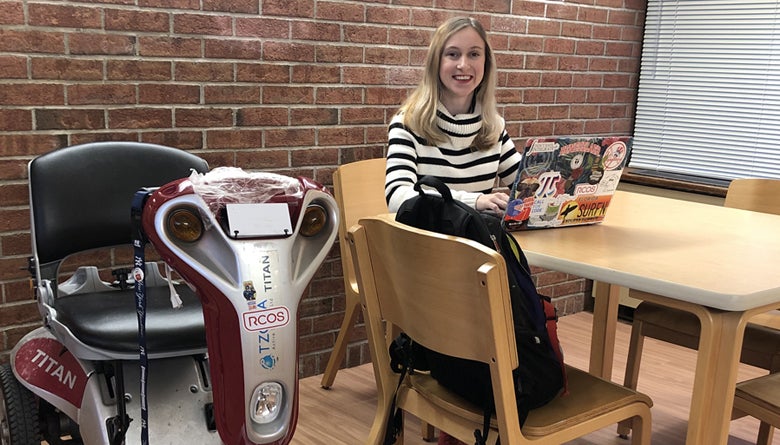When Mallory Gaspard arrived at Rensselaer Polytechnic Institute, she was a chemical engineering major with a quiet determination to study physics. Math was just a sideline—until she took Calculus II in her freshman year.
“My parents and teachers didn’t think I was going to be able to handle it, but I got a perfect score in the class, because I was so interested,” Gaspard said. “That initial spark into mathematics, and my development at Rensselaer has been guided by the amazing people I have met here. I think the friendships that I made and the relationships with my professors are what define my time here and made it so fantastic.”
Gaspard grew up in Lafayette, Louisiana, in a family with deep Cajun roots. As far back as kindergarten, she possessed a love of science and a natural curiosity, later cultivated at the Episcopal School of Acadiana. Her teachers envisioned her as a historian, her parents as an engineer, and in her mind, she was a physicist. Despite excellent grades in math, and an early interest in quantum physics, she was encouraged to pursue engineering as she approached college. Gaspard visited dozens of colleges, but she said Rensselaer “just felt like home.”
“You start talking to people and you realize, these are really like-minded people, they’re on my wavelength,” Gaspard said. “And then walking around campus, I just realized, I belong here.”
When the acceptance letter arrived, Gaspard said, “It was a no-brainer.” She accepted as an engineer, but in the back of her mind she thought it was also a blessing to have access to the highly ranked physics program at the university. Then came her freshman Calculus II class, taught by David Schmidt.
“Math had never been represented to me as a discipline on its own. It was something I was taught to do, a tool to reach other ends,” Gaspard said. By the end of freshman year, Gaspard was a dual major in math and physics in the School of Science. She dived deeply into both.
Gaspard researched with Vincent Meunier, the head of the Department of Physics, Applied Physics, and Astronomy. First, she worked on developing an idea for using network and graph theory to model the connection between atoms, which has applications in electronics. Later, she explored how graphene could be overlaid on a gyroid structure. She also worked with two math professors, writing code for research in probability and combinatorics with Chjan Lim, and modeling neuron firing in the presence of degenerative diseases with Gregor Kovacic.
With the influence of her research, and her participation in the Mathematical and Interdisciplinary Contests in Modeling, under the direction of another mentor, Professor Peter Kramer, her sights are set on modeling. After commencement, she will travel to Cornell University to pursue a doctorate in mathematics, with a specific interest in modeling.
“At the heart of mathematical modeling, you’re building a tool box and learning to approach the world in a different way. It’s almost a more intimate knowledge of the world because you’re separating the causes,” Gaspard said. “Watching a tree sway in the wind is a different experience for me because I think about how the leaves affect the movement of the tree, the speed of the wind, the angle of the hill it sits on. What factors affect this? How would I model that? What kinds of equations would work? And that excites me.”



